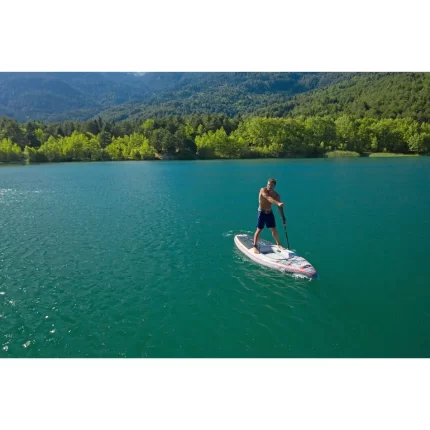Kayaks
Showing 1–12 of 17 results
Kayaks are small, narrow watercraft that are typically designed for one or two paddlers. They come in various styles and are used for recreational and sporting activities on a wide range of water bodies, from rivers and lakes to oceans. Here are some key features and considerations regarding kayaks:
Types of Kayaks:
Recreational Kayaks: These kayaks are designed for casual paddling and are ideal for beginners. They typically have a stable, wider hull for easy maneuverability and are suitable for calm waters like lakes and slow-moving rivers.
Touring or Sea Kayaks: Touring kayaks are longer and narrower, designed for long-distance paddling. They provide better tracking and are suitable for open water conditions like coastal areas and large lakes.
Sit-On-Top Kayaks: These kayaks have an open deck and are ideal for warm weather paddling. They are easy to get in and out of, making them suitable for beginners and for recreational fishing.
Whitewater Kayaks: Whitewater kayaks are designed for navigating fast-moving rivers and rapids. They are typically shorter and have a more agile design for quick maneuvering.
Fishing Kayaks: Fishing kayaks are equipped with features like rod holders, storage compartments, and stable platforms, making them ideal for fishing adventures.
Inflatable Kayaks (IKs): Inflatable kayaks are portable and can be easily inflated and deflated for transport and storage. They come in various styles, including recreational, touring, and whitewater models.
Key Considerations:
Kayak Size: The size of the kayak should match your body size and paddling needs. Larger kayaks provide more stability, while smaller ones offer better maneuverability.
Materials: Kayaks can be made from various materials, including plastic, fiberglass, and composite materials. Each material has its own advantages in terms of durability, weight, and cost.
Paddles: Choosing the right paddle is important for efficient paddling. Paddles come in different lengths and materials, and the choice depends on your kayak style and personal preferences.
Safety Gear: Safety gear such as life jackets (PFDs), helmets (for whitewater kayaking), and communication devices should always be used to ensure safety on the water.
Skill Level: Consider your skill level and experience when selecting a kayak. Beginners should opt for stable and easy-to-maneuver models.
Transport and Storage: Think about how you will transport and store your kayak. Some kayaks are more compact and easier to handle, while others may require roof racks or trailers for transport.
Intended Use: Determine the primary purpose of your kayak. Whether it’s for leisurely paddling, touring, fishing, or whitewater adventures, choose a kayak that suits your intended activities.
Budget: Kayaks come in a wide price range. Set a budget and look for kayaks that fit within your price range while meeting your requirements.
Kayaking offers a versatile and enjoyable way to explore and experience the water. The right kayak choice depends on your preferences, skill level, and the type of water you plan to paddle in. Whether you’re looking for a relaxing day on the lake or an adrenaline-pumping whitewater adventure, there’s a kayak style that’s suitable for you.
 Boards
Boards Packages
Packages Boots & Bindings
Boots & Bindings Essentials
Essentials Waterwear
Waterwear Apparel
Apparel Wakesurfers
Wakesurfers
 Towers & More
Towers & More Boat Accesories
Boat Accesories Ballast Systems
Ballast Systems

























































